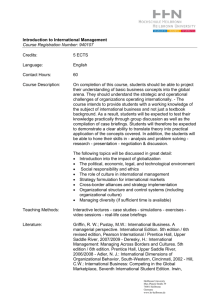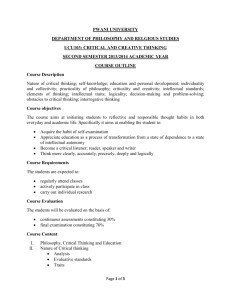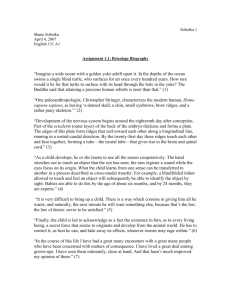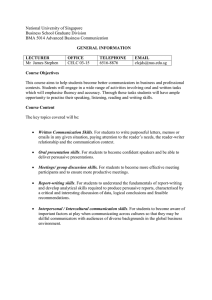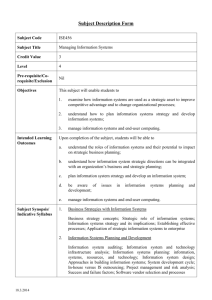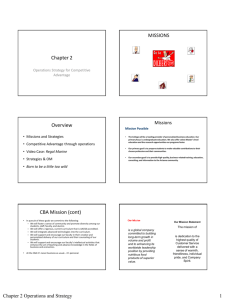Chapter 13, Heizer/Render, 5th and 7th edition
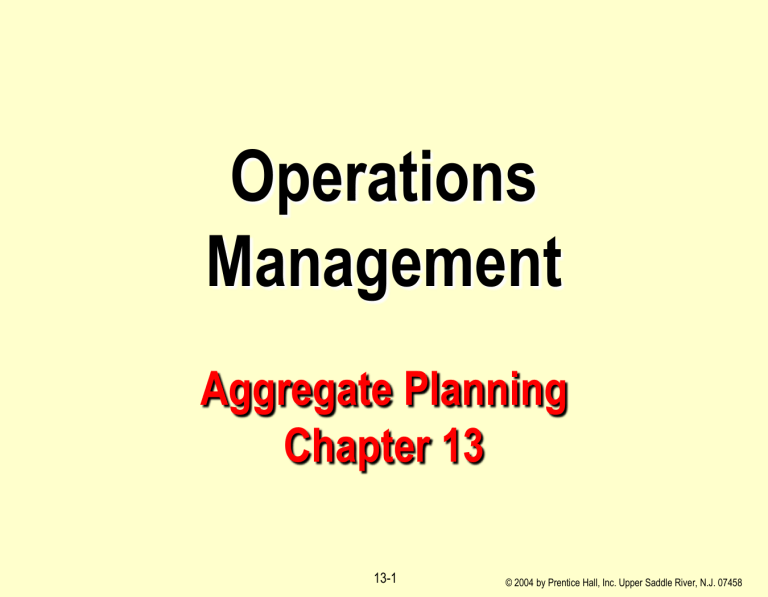
Operations
Management
Aggregate Planning
Chapter 13
13-1
© 2004 by Prentice Hall, Inc. Upper Saddle River, N.J. 07458
Aggregation
Clustering goods or services that have similar demand requirements and common processing, labor, and materials requirements:
Individual 1040’s
Trust returns
Small business returns
# returns – or –
# forms – or –
# hours
$
Tax planning
Estate planning
# clients – or –
# consultations – or –
# hours
13-2
© 2004 by Prentice Hall, Inc. Upper Saddle River, N.J. 07458
Aggregate Planning
Determining the quantity and timing of production for the intermediate future (3 – 18 months)
Responsibility Planning tasks and horizon
13-3
© 2004 by Prentice Hall, Inc. Upper Saddle River, N.J. 07458
Planning Horizons
Short-range plans
Job assignments
Ordering
Job scheduling
Dispatching
Responsible:
Operations managers, supervisors, foremen
Responsible:
Operations managers
Intermediate-range plans
Sales planning
Production planning and budgeting
Setting employment, inventory, subcontracting levels
Analyzing operating plans
Responsible:
Top executives
Long-range plans
R&D
New product plans
Capital expenses
Facility location, expansion
Today 5 years 3 Months 1 year
Planning Horizon
13-4
© 2004 by Prentice Hall, Inc. Upper Saddle River, N.J. 07458
Inputs to Aggregate Plan
Operations
Current machine capacities
Plans for future capacities
Workforce capacities
Current staffing level
Distribution and marketing
Customer needs
Demand forecasts
Competition behavior
Materials
Supplier capabilities
Storage capacity
Materials availability
Aggregate plan
Accounting and finance
Cost data
Financial condition of firm
Engineering
New products
Product design changes
Machine standards
13-5
Human resources
Labor-market conditions
Training capacity
© 2004 by Prentice Hall, Inc. Upper Saddle River, N.J. 07458
Inputs to Aggregate Plan
Physical limitations / constraints
Managerial policy constraints
13-6
© 2004 by Prentice Hall, Inc. Upper Saddle River, N.J. 07458
Relationships of the Aggregate Plan
Marketplace and Demand
Product
Decisions
Demand
Forecasts, orders
Process
Planning & Capacity
Decisions
Aggregate
Plan for
Production
Master
Production
Schedule, and MRP systems
Research and
Technology
Work Force
Detailed Work
Schedules
Raw Materials
Available
External
Capacity
Subcontractors
Inventory On
Hand
13-7
© 2004 by Prentice Hall, Inc. Upper Saddle River, N.J. 07458
Aggregate Planning Goals
Meet demand
(maximize customer service)
Use capacity efficiently
(minimize changes in workforce)
Meet inventory policy
(minimize inventory)
Minimize cost
(maximize profit)
Labor
Inventory
Plant & equipment
Subcontract
Backorder / stockout costs
13-8
© 2004 by Prentice Hall, Inc. Upper Saddle River, N.J. 07458
Aggregate Planning Options
Capacity Options
Vary staffing (hire/fire, overtime, idle time, temporary workers)
Subcontracting
Change inventory levels
Demand Options
Vary prices
Vary promotion
Change lead times
(e.g., backorders)
Offer complementary products
13-9
© 2004 by Prentice Hall, Inc. Upper Saddle River, N.J. 07458
Aggregate Planning Strategies
Level
Strategy
Production rate is constant
Mixed
Strategy
Chase
Strategy
Production equals demand
13-10
Aggregate Plan Worksheet
© 2004 by Prentice Hall, Inc. Upper Saddle River, N.J. 07458
Graphical Approach
70
60
50
40
30
20
10
0
Level production using average monthly forecast demand
Forecast
Demand
Jan Feb Mar Apr May Jun
22 18 21 21 22 20
13-11
© 2004 by Prentice Hall, Inc. Upper Saddle River, N.J. 07458
Controlling the Cost of Labor in Service Firms
Seek:
Close control of labor hours to ensure quick response to customer demand
On-call labor resource that can be added or deleted to meet unexpected demand
Flexibility of individual worker skills to permit reallocation of available labor
Flexibility of individual worker in rate of output or hours of work to meet demand
13-12
© 2004 by Prentice Hall, Inc. Upper Saddle River, N.J. 07458
Yield Management
The aggregate planning process of allocating resources to customers at prices that will maximize yield (revenue)
Used where businesses have:
perishable inventory service or product can be sold in advance demand fluctuates capacity is relatively fixed demand can be segmented variable costs are low and fixed costs are high
Examples – airlines, hotels, cruise lines, etc.
13-13
© 2004 by Prentice Hall, Inc. Upper Saddle River, N.J. 07458
Hotel: Single Price Level
Sales
Demand Curve
$ Net Sales
= net price * 50 rm.
= ($150 - $15) * 50
= $6,750
Potential customers exist who are willing to pay more than the $15 variable cost
Passed up profit contributions
$15 variable cost of room
Some customers who paid
$150 for the room were actually willing to pay more
Money left on the table
$150 price charged for room
13-14
Price
© 2004 by Prentice Hall, Inc. Upper Saddle River, N.J. 07458
$ Net Sales
= $85 * 30 people +
$185 * 30 people
= $8100
Hotel: Two Price Levels
Sales
Demand
Net prices:
Price #1 = $85
Price #2 = $185
$15 variable cost of room
$100
Price #1
13-15
$200
Price #2
Price
© 2004 by Prentice Hall, Inc. Upper Saddle River, N.J. 07458
Making Yield Management Work
Multiple pricing structures must be feasible and appear logical
Manage forecasts of use and duration of use
Manage the changes in demand.
13-16
© 2004 by Prentice Hall, Inc. Upper Saddle River, N.J. 07458
Yield Management Matrix
o n i t r a
D u u s o f e
Predictable use
Unpredictable use
Fixed Price
Quadrant 1
Movies,
Stadiums / arenas,
Convention centers,
Hotel meeting space
Quadrant 3
Restaurants,
Golf courses,
ISP’s
Variable Price
Quadrant 2
Hotels,
Airlines,
Rental cars,
Cruise lines
Quadrant 4
Continuing care hospitals
13-17
© 2004 by Prentice Hall, Inc. Upper Saddle River, N.J. 07458
Summary
Aggregate planning reconciles conflicting needs and objectives
Aggregate plan specifies time-phased production rates, workforce levels and inventory holdings
Aggregation:
products / services are grouped into families
labor may be grouped along family lines or by skills
time may be aggregated (quarters, etc.)
Two basic planning options: changing capacity and changing demand
Aggregate planning strategies:
Level – constant workforce or production level
Chase – vary production to equal demand
13-18
Air NZ video
© 2004 by Prentice Hall, Inc. Upper Saddle River, N.J. 07458
